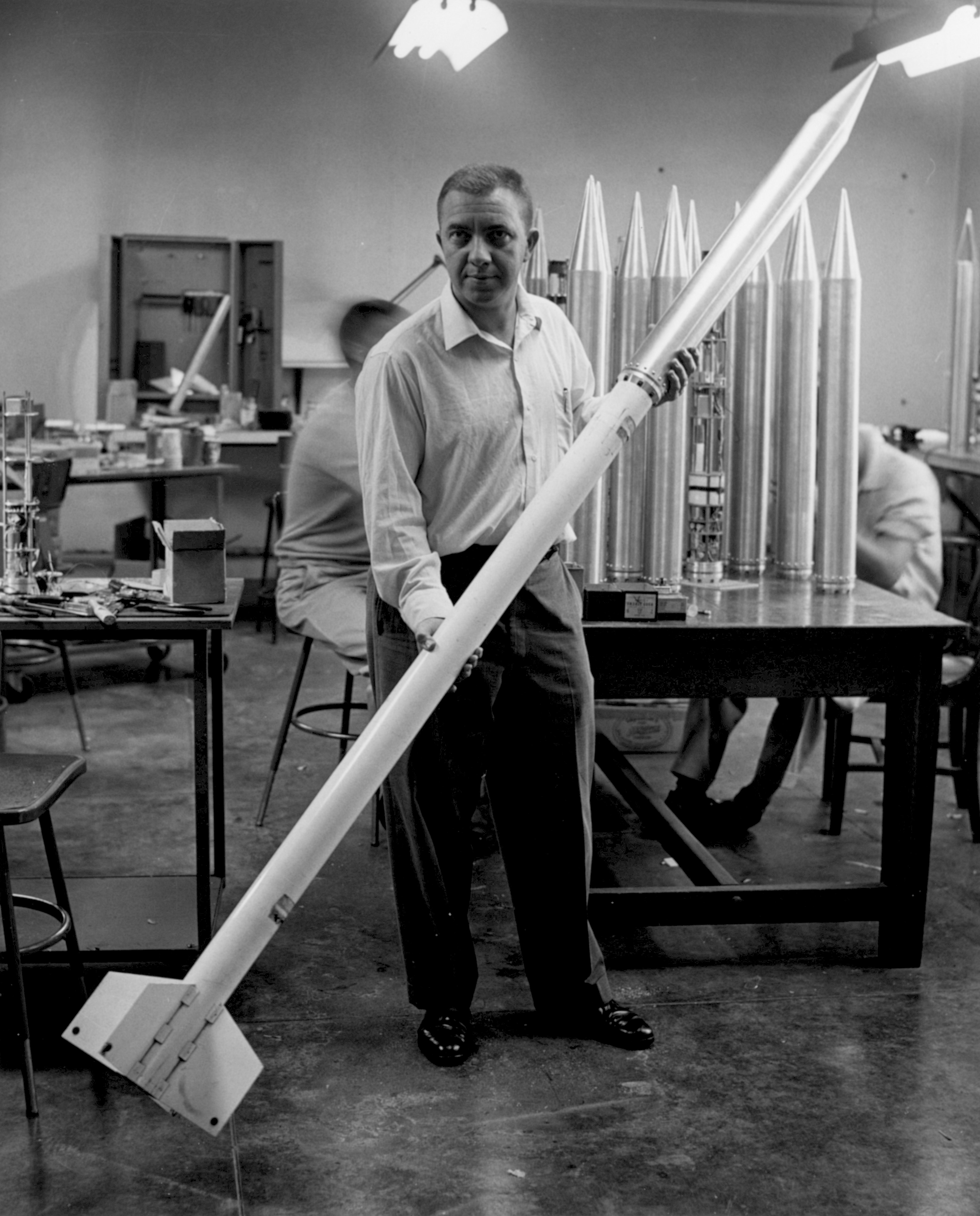|
Viper Dart
Viper Dart is an American sounding rocket A sounding rocket or rocketsonde, sometimes called a research rocket or a suborbital rocket, is an instrument-carrying rocket designed to take measurements and perform scientific experiments during its sub-orbital flight. The rockets are used to ... originally developed in 1972. Space Data Corporation (SDC) developed the vehicle as a mean to increase the apogee of the Super Loki boosted PWN-12A dart. The PWN-12A dart is the non-propulsive second stage that contains a ROBINSphere (Radar OBservable INflation Sphere). The ROBINSphere is a calibrated weight inflatable 1 meter diameter radar reflecting balloon, weighing in at about 150 grams. The weight is measured within one-half gram. The Viper IIIA boosted PWN-12A dart has a maximum apogee of 120 km (74.56 mi), a diameter of 0.11 m and a length of 3.40 m. The Viper II version had a ceiling of 150 km, a diameter of 0.18 m and a length of 3.40 m. This vehicle configuratio ... [...More Info...] [...Related Items...] OR: [Wikipedia] [Google] [Baidu] |
Sounding Rocket
A sounding rocket or rocketsonde, sometimes called a research rocket or a suborbital rocket, is an instrument-carrying rocket designed to take measurements and perform scientific experiments during its sub-orbital flight. The rockets are used to launch instruments from 48 to 145 km (30 to 90 miles) above the surface of the Earth, the altitude generally between weather balloons and satellites; the maximum altitude for balloons is about 40 km (25 miles) and the minimum for satellites is approximately 121 km (75 miles). Certain sounding rockets have an apogee between 1,000 and 1,500 km (620 and 930 miles), such as the Black Brant X and XII, which is the maximum apogee of their class. Sounding rockets often use military surplus rocket motors. NASA routinely flies the Terrier Mk 70 boosted Improved Orion, lifting 270–450-kg (600–1,000-pound) payloads into the exoatmospheric region between 97 and 201 km (60 and 125 miles). Etymology The origin of the term ... [...More Info...] [...Related Items...] OR: [Wikipedia] [Google] [Baidu] |
Super Loki
Loki, officially designated 76mm HEAA Rocket T220, was an American unguided anti-aircraft rocket based on the German Taifun. Like the Taifun, Loki never saw service in its original role, but later found widespread use as a sounding rocket. It was so successful in this role that several advanced versions were developed on the basic Loki layout, including the final Super Loki. Development As part of their anti-aircraft development program of 1942, the ''Luftwaffe'' began developing a number of guided missile projects. However, there was concern that these would not develop in time to be useful in the 1943/44 time frame. To fill the gap, Klaus Scheufelen suggested building a simple unguided rocket that would be fired en-masse directly up into the bomber streams. The result was the Taifun. Taifun was powered by a hypergolic mixture pressure-fed into the combustion chamber. The pressure was provided by small cordite charges that were fired into the fuel tanks, in the process burstin ... [...More Info...] [...Related Items...] OR: [Wikipedia] [Google] [Baidu] |

